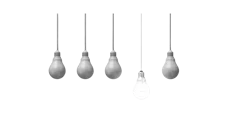

Where Thought Leaders go for Growth


As an essential element in project management, the project team structure plays a key role in leading your projects to success.
The motto of the ideal project team could be "All for one, one for all!".
Indeed, having a strong project team structure is not just about finding a group of people with the right mix of professional skills. There are many ways to set up a cohesive team.
The key is to create an effective and productive team that can communicate, cooperate and innovate in an atmosphere of mutual trust and respect.
But what exactly is the project team structure? And how do you manage it to perform and become a dream team? Find all the answers in this article!
A project team is generally:
It is validated by the steering committee, composed of the company's operational managers, who also appoint the project manager.
The project team is one of the stakeholders of a project, which also includes:
It is made up of:
In agile and web development, we speak of a Scrum team, composed of:
It is essential to have a well-designed organisation to work efficiently.
Within the framework of a project mode, the main challenge is to structure a workgroup composed of business specialists hailing from different departments, yet united around a common objective.
The interest of creating a project team is, therefore:
First, the project objectives must be defined in detail, with clear milestones.
Only then is it possible to create a precise roadmap, in which each team member can understand their missions and tasks. It is also possible to find in it: the skills required and the deadlines to be met in order to successfully complete the entire project.
From there, the steering committee selects the team members best suited for the project to be implemented. The criteria to be considered are:
The project leader is an essential element and should be chosen for their charisma and impeccable organizational skills, qualities that will lead the team to success.
Once the team members have been chosen, you can move on to the next phases of project management.
The forming phase is a period of orientation.
During this stage, people are looking for leadership and authority.
Most of the interactions are social, as members begin to get to know each other.
The storming phase is the most difficult and critical phase to go through. This is a period marked by conflict and competition as individual personalities begin to emerge.
Members may disagree on team goals and subgroups dominated by strong personalities may form.
To get through this stage, members must work to:
Failure to deal with conflict can lead to long-term problems. Dealing with them is critical to reducing the risks associated with your project.
If the teams get through the storming phase, the conflict is resolved and a degree of unity emerges.
In the norming phase, interpersonal differences begin to be resolved and a sense of cohesion is established.
Team performance increases as members learn to cooperate and begin to focus on team goals.
However, the harmony is precarious and if disagreements resurface, the team may fall back into the turbulence phase.
In the performing phase, consensus and cooperation are achieved and the team is mature and organized.
Problems and conflicts still emerge but should be dealt with constructively. The team is focused on solving problems and achieving goals.
Do not hesitate to use and set up different resources such as software, to make your life easier.
In the final phase, the adjourning phase, most of the team's objectives have been achieved.
The focus is on completing the final tasks and documenting the effort and results.
Team members can then be assigned to new projects that require new skills and create a new cycle.
Members must be sufficiently autonomous but interdependent on each other to complete their tasks.
Organization and communication are key: all members feel they are working towards a concrete, realistic and common goal.
It is important to first define the roles, activities and responsibilities of each member of the team.
This includes making sure everyone has the information they need to do their job well and having a reward system in place that matches their goals.
This person will help the team through the various processes, from team creation to collective project management.
To solve very complex problems, diversity in a team can be a decisive advantage.
What about you? Do you have any feedback or interesting stories to share with our readers?







































